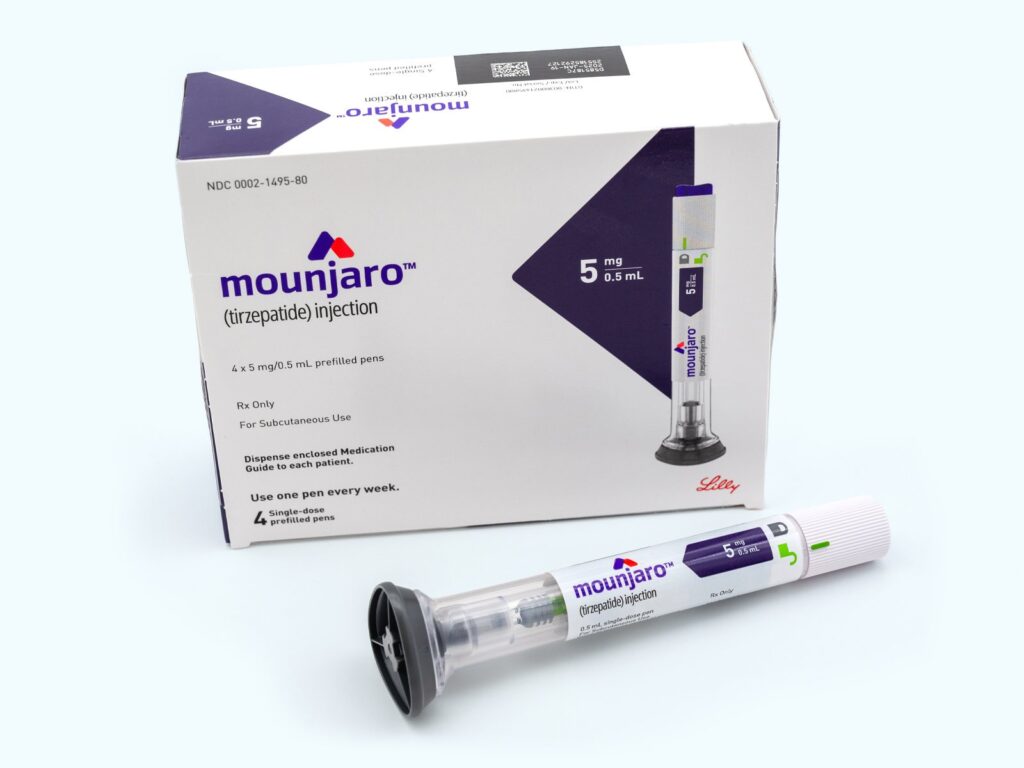Introduction
best weight loss injection for diabetes If you’re exploring options for managing type 2 diabetes or chronic weight, you’ve likely heard of two major players: Mounjaro and Ozempic. These once-weekly injectable medications have taken the medical world by storm, showing incredible results for blood sugar control and weight loss.
But with so much information (and misinformation) out there, it can be confusing to know which one is right for you. Are they the same? Is one truly better than the other?
In this guide, we’ll break down the key differences between Mounjaro and Ozempic, from how they work to their effectiveness and side effects, so you can have a more informed conversation with your doctor.
Disclaimer: This article is for informational purposes only and does not constitute medical advice. Always consult with a qualified healthcare professional before starting or changing any medication.
The Fundamental Difference: How They Work
While both medications belong to the same class of drugs (GLP-1 receptor agonists), their core mechanisms are not identical. This is the single most important difference between them.
- Ozempic (semaglutide): This medication mimics one natural hormone in your body called GLP-1 (glucagon-like peptide-1). Think of it as having one key that unlocks specific benefits: it signals your pancreas to release insulin, slows down digestion, and tells your brain you’re full.
- Mounjaro (tirzepatide): This is a first-in-class medication that mimics two natural hormones: GLP-1 and GIP (glucose-dependent insulinotropic polypeptide). Think of it as having two keys. It does everything Ozempic does, but the addition of GIP is believed to enhance its effects on both blood sugar control and weight loss.
In short: Mounjaro is a dual-agonist, while Ozempic is a single-agonist. This dual-action is why Mounjaro is often referred to as a “GIP/GLP-1 receptor agonist.”



Effectiveness: The Clinical Data
When it comes to results, clinical trials have shown that both medications are highly effective, but Mounjaro has demonstrated a slight edge in key areas.
For Blood Sugar Control (A1c Reduction): In head-to-head trials (like the SURPASS-2 study), Mounjaro led to greater reductions in A1c levels compared to Ozempic in adults with type 2 diabetes.
For Weight Loss: This is where the difference is most pronounced.
- In clinical trials for type 2 diabetes, participants on the highest dose of Mounjaro lost an average of 22 lbs (10 kg), while those on Ozempic lost an average of 14 lbs (6 kg).
- In studies focused specifically on obesity (SURMOUNT-1 for Mounjaro, STEP for Wegovy – Ozempic’s sister drug for weight loss), Mounjaro users lost up to 22% of their body weight, which is a groundbreaking result.
The Bottom Line: While both are effective, Mounjaro has consistently shown superior results for both blood sugar control and weight loss in clinical trials.
Side Effects: A Similar Profile
Because both medications activate the GLP-1 receptor, their side effect profiles are very similar. The most common side effects are gastrointestinal, especially when starting the medication or increasing the dose.
These can include:
- Nausea
- Diarrhea
- Vomiting
- Constipation
- Stomach pain
For most people, these side effects are mild to moderate and tend to decrease over time as the body adjusts. There is no evidence to suggest that one has a “better” or “worse” side effect profile than the other; the experience is highly individual.
Dosage, Cost, and Other Practicalities
| Feature | Mounjaro (Tirzepatide) | Ozempic (Semaglutide) |
|---|---|---|
| Administration | Once-weekly injection | Once-weekly injection |
| Dosing | Starts at 2.5 mg, increases to 5 mg, 7.5 mg, 10 mg, 12.5 mg, 15 mg | Starts at 0.25 mg, increases to 0.5 mg, 1 mg, 2 mg |
| FDA Approval | Type 2 Diabetes. Chronic weight management (as Zepbound). | Type 2 Diabetes. Chronic weight management (as Wegovy). |
| Cost | High list price (~$1,000+/month), but savings cards available. | High list price (~$900+/month), but savings cards available. |
| Insurance | Coverage for diabetes is common. Coverage for weight loss is growing. | Coverage for diabetes is common. Coverage for weight loss is growing. |
So, Which One Is Right for You? The Verdict
There is no simple “winner” in the Mounjaro vs. Ozempic debate. The best choice is entirely personal and depends on several factors:
- Your Health Goals: If maximizing weight loss is your primary goal, the clinical data suggests Mounjaro may have an advantage.
- Your Doctor’s Recommendation: Your doctor will consider your overall health, other medical conditions, and how you might tolerate the medication.
- Insurance Coverage and Cost: The reality is that cost is a major factor. Your insurance may cover one but not the other, or the co-pay might differ significantly. Be sure to check with your provider.
- Individual Response: Some people simply respond better to one medication over the other. It’s an unpredictable factor that only time and experience will reveal.
Mounjaro and Ozempic are both revolutionary tools in the fight against type 2 diabetes and obesity. Mounjaro’s dual-hormone action gives it a slight edge in clinical efficacy, but Ozempic remains a powerful and effective option for many.
The most important step you can take is to talk openly with your healthcare provider. They can help you weigh the pros and cons, consider your financial situation, and make a choice that is safe and effective for your unique health journey.
